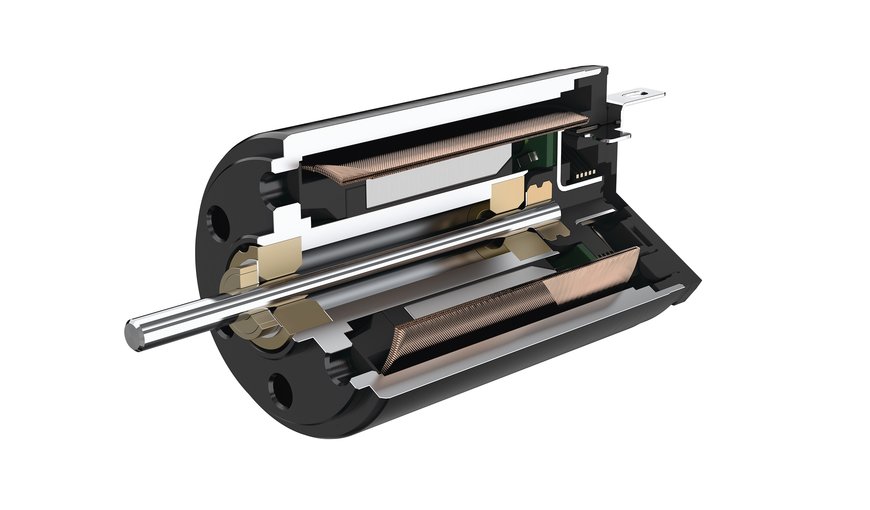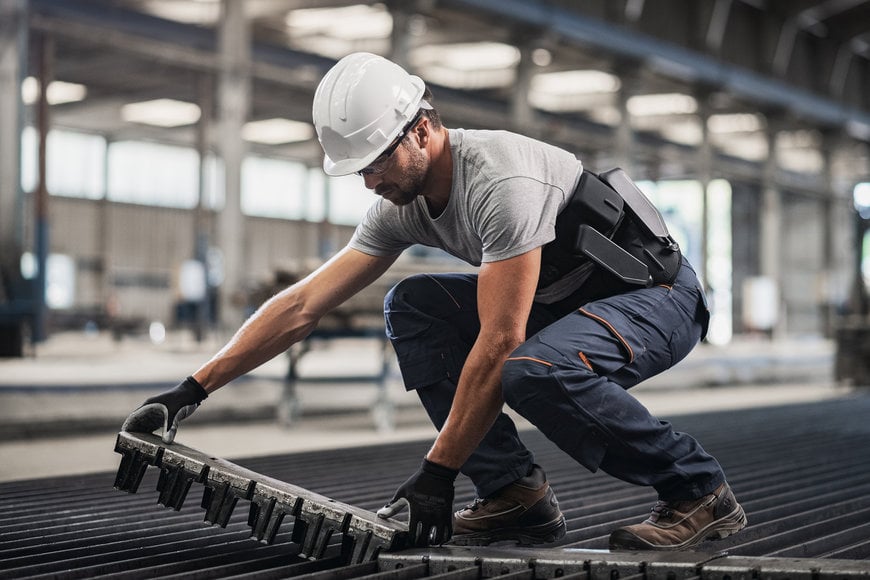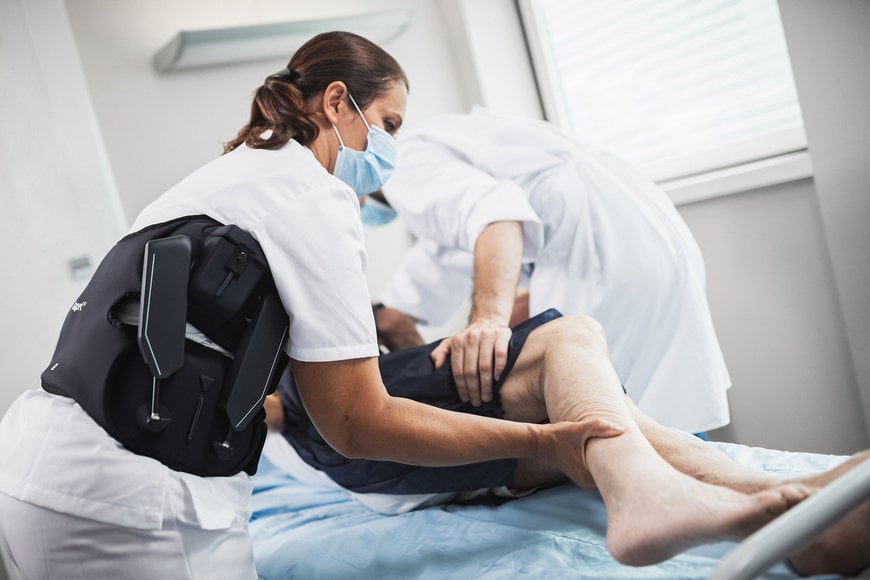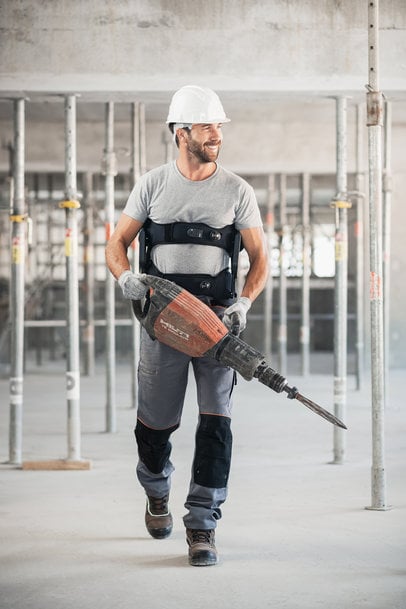www.magazine-industry-usa.com
07
'21
Written on Modified on
AN IDEA STRENGTHENS THE BACK OF THE WORLD
It is neither fatal nor infectious but very difficult to manage and extremely expensive to society: the widespread medical disorder of chronic back pain. A motorised exoskeleton can provide relief to the especially vulnerable lumbar spine. French manufacturer Japet relies on FAULHABER here, as its product demands the highest quality, and every gramme counts.

Back pain accounts for one of every ten sick leaves and 13 percent of early retirements. 80% of people have experienced the disorder themselves and the pain is chronic for 10 to 20 percent of the total population. These numbers come from France, where the annual follow-up costs to the economy and health system are estimated at 20 billion euros. Similar values can be found in all industrial countries.
Adverse strain and continuous overloading of the spine are by far the most common causes for chronic back pains. The improper strain can actually easily be avoided by observing one simple rule: always lift loads with the knees and while keeping the upper body upright. In daily life and with many jobs, this rule can, however, often be difficult to follow. Helping a patient out of bed, lifting a postal package out of the car, handling heavy parts in a production process or working with heavy, portable machines on a construction site can make it extremely difficult to keep back strain in the ergonomically correct range. The lifted weight then unavoidably presses on a flexed spine.

Negative leverage effect aggravates the problem
The leverage effect is extremely negative here: depending on the degree of bending, a 10 kilogramme package can press an equivalent force of up to 50 kilogrammes on the lumbar discs of the lower spine. While these natural shock absorbers made of fibrocartilage are exceptionally tough and resilient, they age over time, and, when constantly subjected to improper strain, can wear prematurely: they shrink, the damping effect subsides and the adjacent bone tissue also changes, often with painful consequences. In the case of a slipped disc, the intervertebral disc actually ruptures, the core slips out and presses extremely painfully against the surrounding nerves.
“If the improper strain cannot be consistently avoided, measures that provide relief must be considered,” says Antoine Noel. In 2015, the robotics engineer, together with Amelie Blondeaux and Damien Bratic, founded the company Japet in Lille. “Our objective was to develop an active support corset for the lumbar spine. Undesirable strain should be compensated for by motor power, thereby protecting the intervertebral discs.”

Relief through actuators
The result of their work is the exoskeleton Japet.W. It consists essentially of two belts that are connected to one another by four actuators – two on each side of the body. The upper belt supports the back, the lower belt is seated on the hips. The actuators are so-called series-elastic actuators (SEA). They “feel” a force that is acting upon them and use their own motor power to counter it.
Their most important elements are a motor, a lead screw and a spring. A potentiometer measures the applied force, for example, if the wearer of the exoskeleton bends forward and picks up a weight. This measurement signal puts the motor, which is coupled to the drive lead screw by a gearhead, into operation. The turning of the lead screw transfers the motor power to the spring. It presses from the lower belt on the upper belt, supports the upper body and relieves the lumbar spine. With respect to the level of relief provided by the exoskeleton, the wearer can select from four levels. The controller and the battery of the device are integrated in the double belt.

“The hips experience only a slight additional strain as a result of the added pressure; they are, in any case, able to withstand even heavier weights without problem,” explains Antoine Noel. “The force that acts on the lumbar spine is, on the other hand, greatly reduced. It is, above all, the excessive strain on the intervertebral discs while in a bent position that is thereby significantly reduced or avoided completely. At the same time, the position of the upper body is also improved.”
Micromotors lift four cars
The founders of Japet first met FAULHABER at a trade fair. At that time, their company was still a technical testing lab in a side room of a clinic in northern France. The first sale was still in the distant future. In their first test devices, the three young entrepreneurs had installed inexpensive and noisy motors that could be controlled only poorly. The experts from FAULHABER took a liking to the ideas of the young engineers. They supported them with intensive consulting and prototypes of high-quality motors that could meet the needs of the demanding application. “That played a big part in making our product ready for series production,” emphasises Antoine Noel.

In the Japet.W exoskeleton, four DC-motors with precious metal commutation of the 1524…SR series supply the supporting force for relieving the spinal column. Responsible for the load transmission are planetary gearheads of the 15A series with a reduction of 52:1. Because the device is, of course, worn on the body to which it is to provide relief, every gramme matters here – at 18 g per motor, the drives account for just a fraction of the total weight. Nevertheless, they are strong enough to relieve the intervertebral discs the weight of three to four medium-sized cars over the course of a workday.
In addition to the ratio between volume and force, quality and reliability are among the key decisive criteria for Japet: “The exoskeleton is a certified medical product,” explains Antoine Noel. “The highest standards apply here. Moreover, the device must support its wearer in continuous operation, over a long period of time and, ideally, with no maintenance. This is made possible with the drives from FAULHABER.”
The Japet.W has now been on the market for over a year. It is already used in numerous industries, including the railway industry, in construction and in medical care. Its use serves to counter the possible development of chronic back pain. It is, however, also used by people who have already developed this syndrome and are searching for a way to continue to work. “75% of all wearers who had previously developed back pain while working report from an effective reduction in pain,” emphasises Antoine Noel. “That is a noteworthy value from a medical perspective, especially as chronic back pains are a very persistent and difficult to treat condition. Because we all tend to work longer and because the know-how of the older employees is becoming increasingly more valuable, the exoskeleton has great potential from an economic vantage point as well.”

